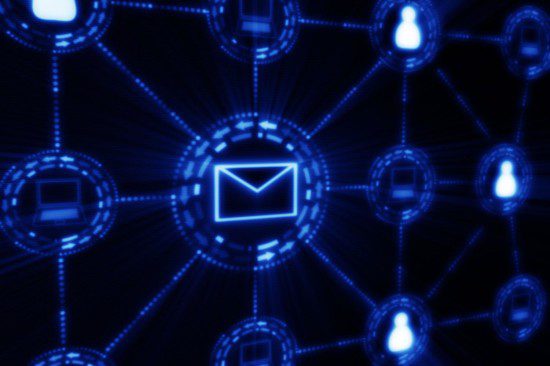The constantly-evolving email encryption landscape is a tell-tale clue as to email’s vulnerability. Email service providers and encryption software makers must continually up their game because they know organisations use email to transmit their most sensitive content – a fact that makes a valuable high-priority target for cybercriminals.
Sending a document via email is like writing it on the back of a postcard and popping it into the mailbox, for it to then be read by every single person who handles it on its journey to its destination. When you click “send” on an email it travels through firewalls, ISPs, servers, virus checkers and even data harvesting bots. It is stored, saved, copied and forwarded multiple times without any form of encryption. What this means is that email can very easily be compromised and the important data contained within it can be read and downloaded by unscrupulous third parties.
Cloud faxing, and even manual faxing, is a completely different story. Any kind of faxing uses the Public Switched Telephone Network (PSTN), which is inherently secure. When a document is sent by fax it is converted into base64 binary at its source, sent through the PSTN, and then reassembled at the other end. Hacking into the PSTN requires direct manual access to the telephone line, and even if a file was intercepted it would appear as nothing but noise, making it impossible to interpret and read.
There are many reasons why email is an unsecure method of information transfer compared to fax. From phishing attacks to intercepting business emails, when you send sensitive data via email it’s at risk of being compromised. The following are three reasons why you should instead use cloud fax for secure data exchange:
1. Cloud fax has been providing enterprise-calibre secure document exchange for decades
The reason digital cloud fax technology is decades ahead of email in terms of secure data transmission is very straight forward. While email is used for everything from exchanging confidential data to asking co-workers where to go for lunch, most businesses use fax only to share important, and often highly sensitive documents. Nobody faxes a colleague about where to go for lunch.
As a result, cloud fax providers have had to develop an infrastructure that guarantees business users the most secure, private, and legally compliant way to transmit their confidential data to clients, partners, and other third parties. In contrast, email providers and encryption companies are constantly playing catch up with the ever-changing techniques and resources available to cyber criminals.
- Cloud fax is far less vulnerable to social engineering attacks.
There’s another reason why it makes more sense to transmit your company’s sensitive and government-regulated data by cloud fax instead of email. When your employees receive a fax from a partner or client, the chances are that the fax isn’t going to ask them to take any action in the document itself. In nearly all cases, inbound faxes contain common, familiar documents central to employees’ everyday workflows. These could be court documents for law firms, signed contracts for financial and real estate companies, or updated patient records for healthcare organisations.
It makes no sense for an inbound fax to ask its recipient to “click on this link” – and even less sense for the recipient to then do so. As such, exchanging sensitive documents with partners, vendors, and other third parties is much safer by cloud fax than by email, because employees don’t tend to fall for phishing attempts via fax.
- Cloud fax just isn’t on hackers’ radar
No matter how much effort you put into encrypting every email message, cybercriminals will always look for new and clever ways to breach your email environment and steal the messages’ contents, either to blackmail you with them or to sell the data on the dark web.
Even the best encryption programme might not always hold up across your organisation. And, as we’ve also noted already, your email environment remains a favourite target for hackers. Your organisation is always going to need email. And we highly recommend you deploy as advanced an encryption solution as you can find and afford. But to the extent that staff regularly send and receive confidential documents and data regulated by your industry’s privacy laws, the best bet is to keep those communications outside of your email environment altogether and instead send and receive all of them using a proven and trusted cloud-fax solution.
Scott Wilson, Vice President, International Sales & Support at Consensus Cloud Solutions
The opinions expressed in this post belongs to the individual contributors and do not necessarily reflect the views of Information Security Buzz.



